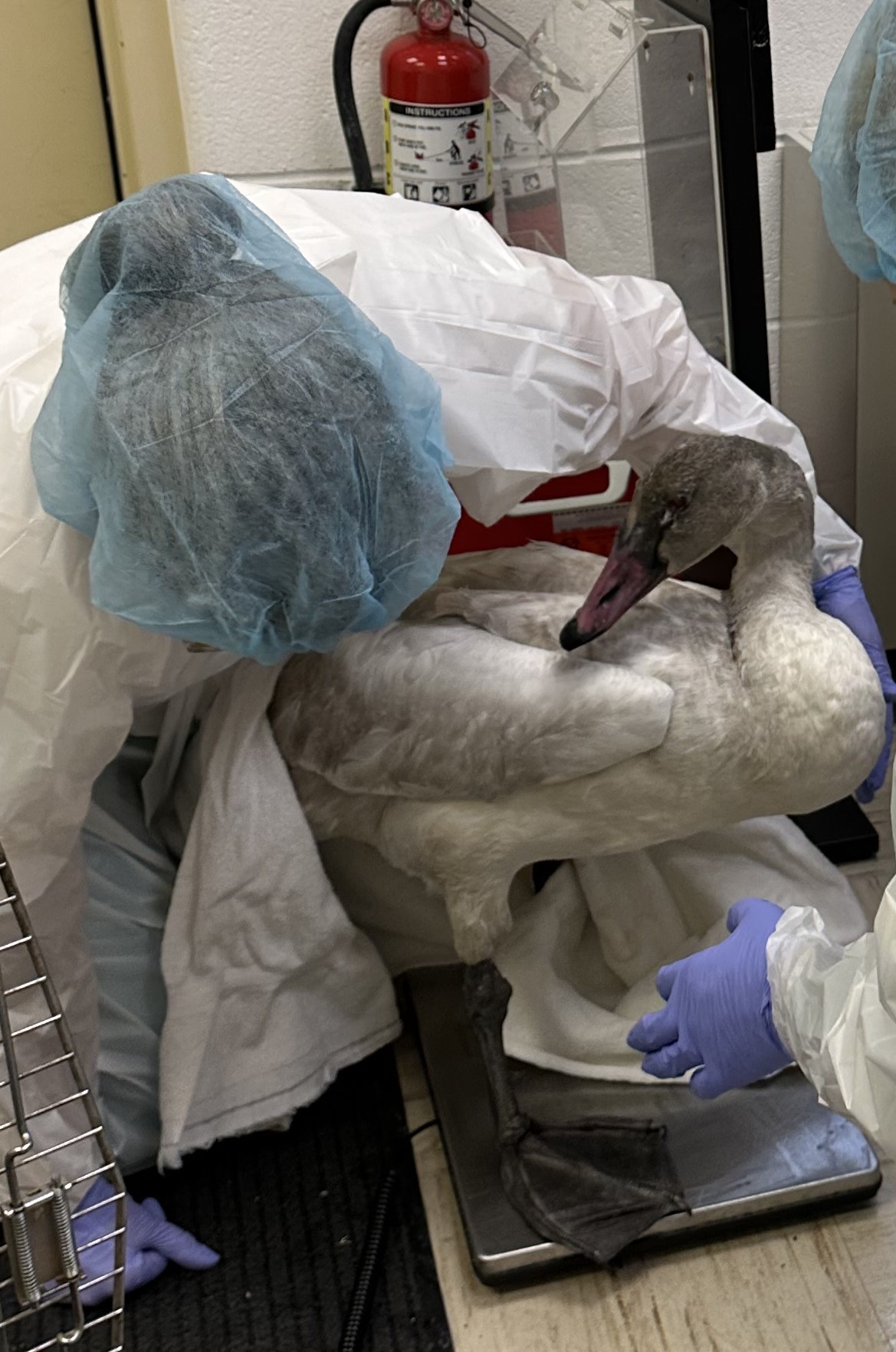Carefully Managing Highly Pathogenic Avian Influenza at the Janet L. Swanson Wildlife Hospital
While avian influenza has affected multiple wild and domestic bird populations, as well as a range of mammal species, across the world, the Janet L. Swanson Wildlife Hospital at Cornell University has optimized its use of clinical medicine, practical precautions, and collaboration to effectively manage the risk of disease transmission among birds in the hospital, and from birds to mammals, including humans.
Highly pathogenic avian influenza, or HPAI or bird flu, is a virus primarily transmitted through saliva, mucus, feces from birds to other birds or from birds to mammals. The predominant strain of concern is H5N1. The most commonly affected families of birds include raptors such as hawks and eagles, water birds such as geese and ducks, and corvids such as crows and blue jays. Pigeons and starlings, the latter of which are invasive to the United States, have seen low levels of virus transmission and one study demonstrated no deaths in European starlings and Carneux pigeons inoculated with the virus.
At the Janet L. Swanson Wildlife Hospital, where 65 to 70% of the caseload is comprised of birds, avian influenza frequently comes to mind when new patients arrive at the hospital. Dr. Sara Childs-Sanford, Section Chief of Wildlife Medicine, says that neurologic disease and respiratory disease are the most common presenting signs, but some positive cases seen at the hospital do not have either, and the birds are simply quiet and thin on presentation.
The current HPAI outbreak began early in 2022 on the east coast of the United States, which correlated with the beginning of avian migrations. Dr. Childs-Sanford explained that by the time their first positive case—a Cooper’s hawk—arrived at the hospital in April 2022, clinicians and hospital staff were already aware of the virus and had protocols in place.
They further coordinated with the New York State Department of Environmental Conservation (DEC) and the Cornell University College of Veterinary Medicine’s Animal Health Diagnostic Center (AHDC) to further refine their strategy, with a focus on helping wildlife rehabilitators establish protocols to prevent the spread of disease between potentially infected wild birds and their own domestic poultry and other species. While there had been previous outbreaks of avian influenza, the H5N1 strain was the hospital’s first time incorporating precautionary procedures into daily protocols.
Mammals commonly seen at the hospital that can be infected include red foxes and opossums, which may scavenge infected birds. If an animal presenting to the hospital is a species commonly infected with avian influenza, or its history suggests a potential infection, the hospital staff wear personal protective equipment (PPE) including gowns, gloves, face coverings, and hair nets upon initial intake examination. They also conduct an intake examination in a room separate from the rest of the hospital and patients, collect a swab for avian influenza testing, and house the animal separately until its test results have been confirmed.
If a swab from a bird or mammal comes back positive for avian influenza, the animal is humanely euthanized. Though the hospital staff work day and night to ensure the best care for all animals, the virus is 100% fatal in raptors, and long-term isolation and treatment of infected birds poses a risk of disease spread to other patients in the small hospital, as well as zoonotic transmission of HPAI to staff members.
Since many of the patients are brought to the hospital by members of the public, the Swanson Wildlife Hospital is also focused on increasing awareness of the potential for zoonotic transmission of the virus from birds to people.
“If we suspect an avian influenza infection based on the history given to us, we may tell the finder there is a possibility that this animal could have avian influenza and to please wear a mask and gloves when rescuing and transporting the bird to our hospital. We can also assist in finding licensed wildlife rehabbers in the finder’s area who may be able to helps,” said Dr. Childs-Sanford.
The avian influenza outbreak, while devastating for some populations of wild birds as well as mammals, has also been a reminder of how interconnected the health of wild populations is with the health of people and our domestic animals. Collaboration between, for example, veterinary professionals, disease ecologists, epidemiologists, public health officials, and environmental health experts is essential for safeguarding the health and wellbeing of all.
Written by Victoria Priester, DVM ‘26

